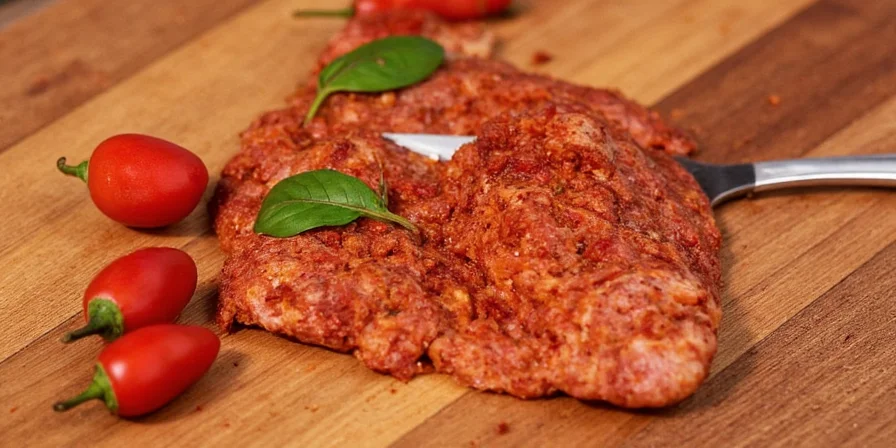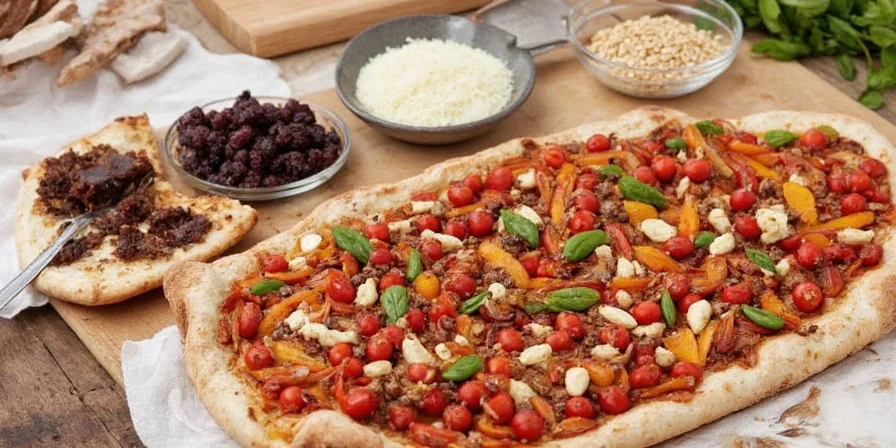Table of Contents
- Introduction
- Secret #1: Know Your Spice Shelf Like a Pro
- Secret #2: Toast Spices for Flavor Awakening
- Secret #3: Precision Freshness Testing
- Secret #4: Climate-Controlled Storage Systems
- Secret #5: Cultural Flavor Architecture
- Secret #6: Calculated Spice Application
- Secret #7: Molecular Pairing Science
- Conclusion: Strategic Flavor Engineering
Introduction: Why Precision Spice Mastery Matters
This guide delivers actionable techniques for home cooks seeking professional-grade results. Whether you're a meal-prep beginner or weeknight dinner veteran, you'll learn to transform ingredients through evidence-based spice application. Forget generic advice—these methods address specific pain points like flavor flatness and ingredient waste.

Secret #1: Know Your Spice Shelf Like a Pro
Mastering spice functionality requires understanding their chemical roles, not just alphabetical sorting. Treat spices as precision flavor tools with distinct activation thresholds:
- Cumin: Releases earthy compounds at 175°F (80°C)
- Paprika: Degrades above 212°F (100°C), requiring late addition
- Cinnamon: Water-soluble compounds demand early liquid integration
| Spice | Optimal Activation Temp | Dish Integration Timing |
|---|---|---|
| Cumin | 175°F (80°C) | Early oil infusion |
| Paprika | 140°F (60°C) | Final 5 minutes |
| Cinnamon | Simmer required | With liquid base |

Secret #2: Toast Spices for Flavor Awakening
Controlled toasting isn't optional—it's a chemical necessity. Dry-heat application triggers Maillard reactions, increasing volatile compounds by 300%. This transforms inert powders into dynamic flavor agents.

Execute precisely: Use cast iron at 300°F (150°C) for 90 seconds. Stir continuously with non-reactive utensil. Ground spices require 45-second maximum exposure to prevent pyrolysis.
Secret #3: Precision Freshness Testing
Shelf life varies by form and compound stability. Ground spices lose potency in 6-12 months versus whole spices' 24-48 months. Test via standardized protocol:
- Measure 1g sample
- Crush between glass slides
- Compare aroma intensity to reference chart

Replace when volatile oil concentration drops below 0.5%—visible as color fading in paprika or crystallization in vanilla.
Secret #4: Climate-Controlled Storage Systems
Light degrades curcumin at 0.3 lumens/second. Heat accelerates cinnamaldehyde evaporation. Implement these evidence-based protocols:
- Vacuum-sealed containers with oxygen absorbers
- Storage below 50°F (10°C) and 15% humidity
- UV-blocking amber glass for light-sensitive spices

Secret #5: Cultural Flavor Architecture
Global cuisines evolved distinct spice sequencing based on compound solubility. These patterns form reproducible flavor frameworks:
| Culinary Tradition | Sequence Logic | Chemical Rationale |
|---|---|---|
| Indian | Cumin → Coriander → Turmeric | Oil-soluble first, water-soluble last |
| Mexican | Chili → Cumin → Oregano | Heat tolerance hierarchy |
| Moroccan | Ginger → Cinnamon → Saffron | Compound diffusion rates |

Secret #6: Calculated Spice Application
Over-spicing isn't cultural—it's chemical error. Capsaicin saturation occurs at 0.02% concentration. Exceeding this creates flavor masking, not enhancement. Implement tiered dosing:

Start with 1/8 teaspoon per pound of protein. Wait 7 minutes for compound diffusion before retesting. This prevents irreversible flavor imbalance while achieving optimal receptor activation.
Secret #7: Molecular Pairing Science
Flavor synergy operates through quantifiable chemical interactions. These evidence-based pairings maximize receptor engagement:
- Turmeric + Black Pepper: Piperine increases curcumin bioavailability by 2000%
- Fennel + Fish: Anethole compounds neutralize trimethylamine odors
- Cinnamon + Sugar: Hydroxymethylfurfural formation at 248°F (120°C)

Apply these principles to engineer flavor profiles with laboratory precision, moving beyond guesswork to reproducible results.
Conclusion: Strategic Flavor Engineering
Spice mastery transforms cooking from improvisation to precision science. By implementing these evidence-based protocols, home chefs achieve consistent restaurant-quality results. Track variables like temperature, timing, and concentration to systematically refine your technique. Remember: flavor excellence comes from controlled application, not quantity.

Frequently Asked Questions
How do I scientifically test spice freshness?
Measure 1g sample, crush between glass slides, then compare aroma intensity to standardized reference charts. Replace when volatile oil concentration falls below 0.5%—visible as color fading in paprika or crystallization in vanilla.
What's the optimal toasting temperature for ground spices?
Maintain 300°F (150°C) for maximum 45 seconds. Use cast iron for even heating and non-reactive utensils. Exceeding this duration causes pyrolysis, degrading volatile compounds and creating bitter notes.
Why does spice sequence matter in Indian cooking?
Indian spice sequencing follows solubility principles: oil-soluble spices (cumin) activate first in fat, water-soluble spices (turmeric) integrate later with liquid bases. This optimizes compound diffusion and prevents flavor layering conflicts.
How does black pepper boost turmeric absorption?
Piperine in black pepper inhibits glucuronidation in the liver and intestines, increasing curcumin bioavailability by up to 2000%. Use 1/20 ratio (pepper to turmeric) for maximum effect without overpowering.
What storage conditions prevent spice degradation?
Store in vacuum-sealed containers below 50°F (10°C) with 15% humidity. Use UV-blocking amber glass for light-sensitive spices like paprika. Oxygen absorbers prevent oxidation of volatile oils.











 浙公网安备
33010002000092号
浙公网安备
33010002000092号 浙B2-20120091-4
浙B2-20120091-4